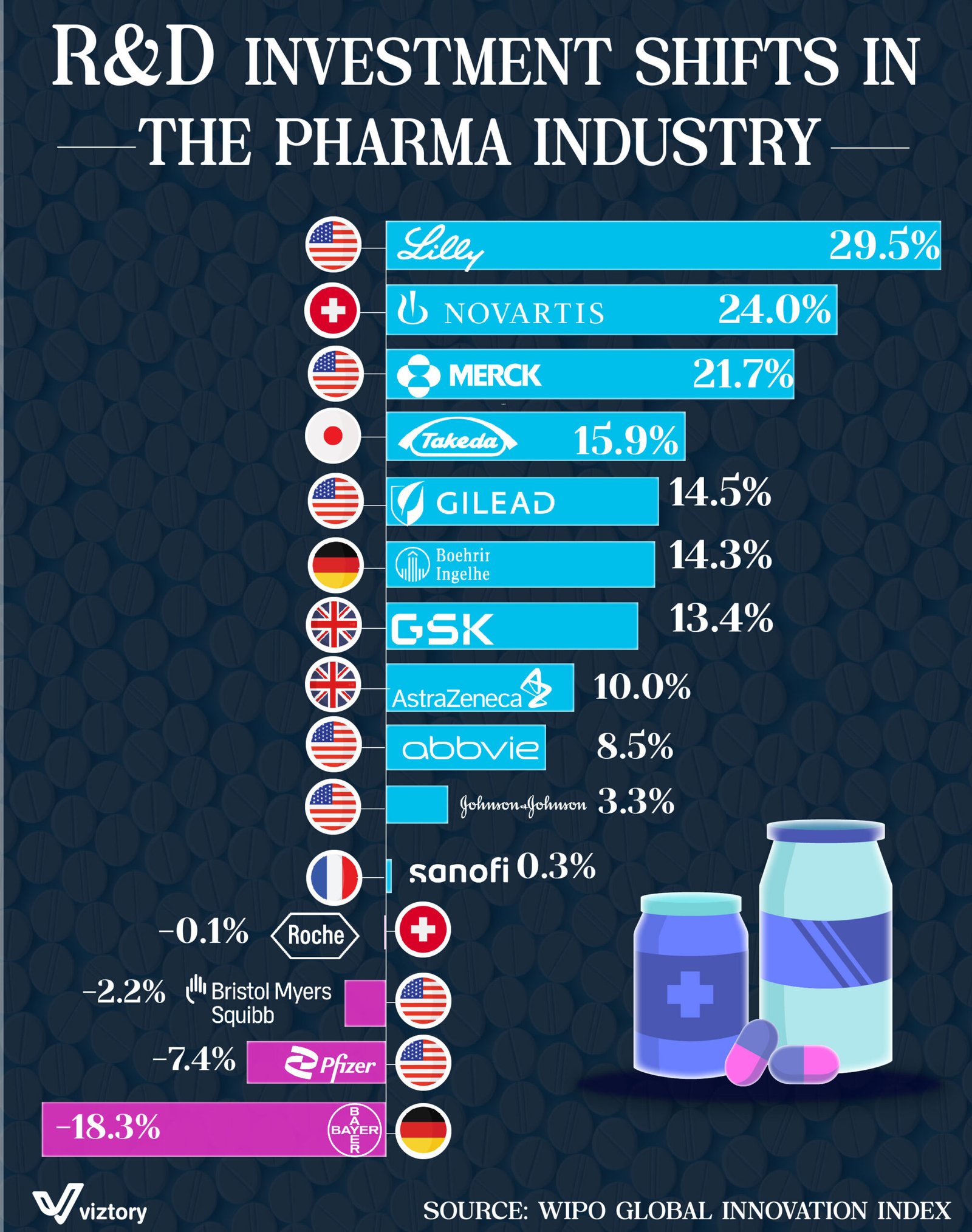R&D Investment Shifts in the Pharma Industry
-
Feb, Sat, 2025
The pharmaceutical industry is undergoing a transformation in research and development (R&D) investments, as companies prioritize innovative therapies, personalized medicine, and advanced technologies. According to the WIPO Global Innovation Index, R&D spending trends in 2023 highlight the strategic focus of leading pharmaceutical firms on driving healthcare advancements.
Key Players in R&D Investments
Lilly (29.5%)
Eli Lilly leads the pack with an impressive 29.5% of its revenue invested in R&D. The company’s focus on diabetes treatments, oncology, and neuroscience has cemented its position as a trailblazer in life-changing therapies.Novartis (24.0%)
Novartis, a Swiss giant, allocates 24.0% of its revenue to R&D, emphasizing its commitment to cutting-edge technologies like gene therapies and cell-based treatments. Its research into rare diseases and immunology continues to push boundaries.Merck (21.7%)
With 21.7% R&D investment, Merck is making strides in immuno-oncology and vaccine development. The company’s advancements in cancer therapies and its work on emerging infectious diseases highlight its pivotal role in global health.Takeda (15.9%)
Japan’s Takeda dedicates 15.9% of its budget to R&D, focusing on gastroenterology, oncology, and rare diseases. Takeda’s global research initiatives emphasize collaboration and innovation.Gilead (14.5%)
Gilead’s investment of 14.5% into R&D underscores its leadership in antiviral therapies, particularly for HIV and hepatitis. The company’s expansion into oncology is a testament to its ambition to diversify its portfolio.Boehringer Ingelheim (14.3%)
This German company is renowned for its advancements in respiratory treatments and animal health. Boehringer’s R&D focus is on chronic diseases and regenerative medicine.GSK (13.4%)
GlaxoSmithKline’s R&D priorities lie in vaccines, infectious diseases, and oncology. With 13.4% of revenue invested, GSK remains a critical player in global health innovation.
Declining Investments: A Strategic Shift
While many companies are increasing their R&D budgets, some firms, such as Pfizer (-7.4%) and Bayer (-18.3%), have reduced their investments. These declines reflect shifts in corporate strategies, such as focusing on commercializing existing therapies or restructuring business units.
The Role of R&D in Health Outcomes
Pharmaceutical R&D is the backbone of medical breakthroughs. Investments in cutting-edge technologies like mRNA vaccines, CRISPR gene editing, and AI-driven drug discovery are transforming healthcare. By addressing unmet medical needs, these innovations improve patient outcomes and extend life expectancy.
Challenges in Pharmaceutical R&D
The high costs and risks associated with R&D remain a significant challenge. Regulatory hurdles, long development timelines, and increasing competition require companies to be strategic in their investments. Collaborative partnerships between academia, biotech startups, and pharma firms are becoming essential to share expertise and resources.
Conclusion
R&D investments in the pharma industry highlight the sector’s commitment to advancing healthcare globally. Companies like Lilly, Novartis, and Merck are leading the charge, ensuring that groundbreaking treatments continue to reach patients. As the industry evolves, strategic investments in innovation will remain crucial for addressing the world’s most pressing health challenges.
Source:
- WIPO Global Innovation Index (2023)

